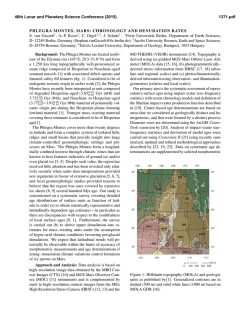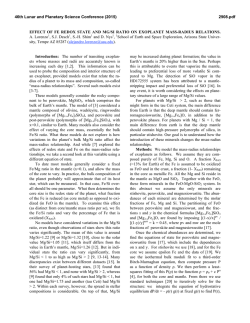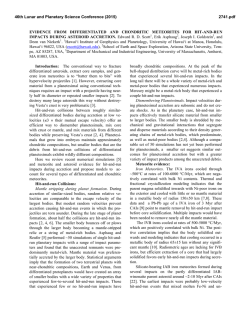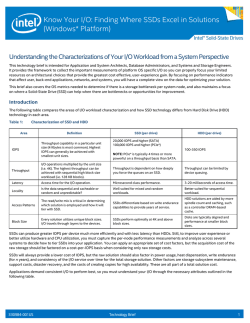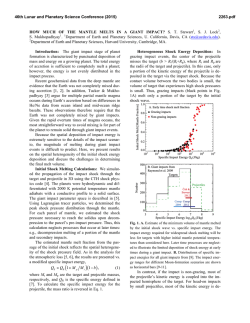
Distribution of Captured Planetesimals in Circumplanetary Disks
46th Lunar and Planetary Science Conference (2015) 1326.pdf DISTRIBUTION OF CAPTURED PLANETESIMALS IN CIRCUMPLANETARY DISKS Ryo Suetsugu1, 2 Keiji Ohtsuki2. 1Organization of Advanced Science and Technology, Kobe University, Kobe 6578501, Japan ([email protected]), 2Department of Earth and Planetary Sciences, Kobe University, Kobe 657-8501, Japan. Introduction: When growing giant planets become massive enough by capturing gas from the protoplanetary disk, circumplanetary disks are formed around the planets. Regular satellites of giant planets have nearly circular and coplanar prograde orbits, and are thought to have formed in the circumplanetary disks [1,2]. Therefore, clarification of the origin of regular satellites would also provide constraints on the formation processes of giant planets. Recent theoretical studies including high-resolution hydrodynamic simulations of gas flow around growing giant planets have significantly advanced our understanding of their formation processes. Canup & Ward [3] proposed the so-called gas-starved disk model for the formation of regular satellites of giant planets, where the satellites are formed in waning circumplanetary disk of gas and solids at the very end stage of giant planet formation. N-body simulations of satellite formation based on the above model showed formation of several principal satellites similar to the satellite systems of the giant planets [e.g., 4,5]. Canup & Ward [3] assumed that major building blocks of the satellites are meter-sized or smaller bodies that are brought to the disk with the gas inflow from the protoplanetary disk. Possible contribution of larger planetesimals that are decoupled from the inflowing gas has been briefly discussed [1,2], but was not studied in detail. Recently, supply of solid bodies to circumplanetary disks has been studied using detailed orbital integration. Assuming an axisymmetric structure for the circumplanetary disk, Fujita et al. [6] performed three-body orbital integrations and examined capture of planetesimals from their heliocentric orbits to the circumplanetary disk. They found that planetesimals approaching the circumplanetary disk in the retrograde direction (i.e., in the direction opposite to the motion of the gas in the disk) are more easily captured by gas drag, because of the larger velocity relative to the gas. More recently, Tanigawa et al. [7] examined capture process of solid materials with various sizes, using results of hydrodynamic simulations of gas flow around a growing giant planet and three-body orbital integration for initially circular, non-inclined orbits. They found that accretion efficiency of the solid matelials peaks around 10 meter-sized matelials. Therefore, these works showed that bodies that are sufficiently large to be decoupled from the gas flow can contribute to the formation of regular satellites. However, distribution of captured solid bodies in the disk was not studied in these works. In the present work, we perform orbital integration for planetesimals that are decoupled from the gas inflow but are affected by gas drag from the circumplanetary gas disk around a giant planet. We examine capture of planetesimals from their heliocentric orbits by gas drag from the circumplanetary gas disk and orbital evolution of captured planetesimals in the disk. Using our numerical results, we derive distribution of the surface number density of captured planetesimals in the circumplanetary disk. Numerical Method: We consider a local coordinate system (x, y, z) centered on a planet. We assume that the planet is on a circular orbit and is embedded in a disk of planetesimals. Also, the planet is assumed to have a circumplanetary gas disk, whose mid-plane coincides with the planet's orbital plane. In the present work, we assume that the mass of a planetesimal is much smaller than that of the planet, and neglect gravitational interaction between planetesimals. At azimuthal locations in the protoplanetary disk far from the planet, planetesimals are assumed to have uniform radial distribution. Planetesimals are supplied through the azimuthal boundaries at y = ±100 RH (RH is the Hill radius of the planet), which is far enough to neglect the planet's gravitational effect. We integrate the orbits of each planetesimal by solving Hill's equation with the effect of gas drag from the circumplanetary disk. In the present work, we assume an axisymmetric thin circumplanetary disk, as in [6]. The radial distribution of the gas density is assumed to be given by a power law, and its vertical structure is assumed to be isothermal. Gas elements in the disk are assumed to rotate in circular orbits around the planet, with an angular velocity slightly lower than Keplerian velocity due to its radial pressure gradient. We turn on gas drag only within the planet’s Hill sphere. Results: Figure 1 shows an example of snapshots of the spatial distribution of planetesimals in the vicinity of the planet. Figure 1(a) shows that some of the planetesimal in the Hill sphere are permanently captured (E<0, where E is the Jacobi energy of planetesimals) by the gas drag from the circumplanetary disk. Some of these captured 46th Lunar and Planetary Science Conference (2015) 1326.pdf planetesimals have prograde orbits about the planet, while others have retrograde orbits. Figure 1(a) also shows that there are many planetesimals that are passing through the planet's Hill sphere but are not gravitationally bound within the Hill sphere (i.e., they have positive E). Planetesimals captured into retrograde orbits tend to have larger velocity relative to the gas than the case of prograde orbits. Thus, planetesimals in retrograde orbits spiral into the planet more quickly [6]. In the case of planetesimals captured in the prograde direction about the planet, gas drag from the circumplanetary disk decreases the eccentricity and semi-major axis of their planet-centered orbits, and the timescale for eccentricity damping is shorter than that of the orbital decay. Therefore, first, planetesimals' orbits become nearly circular, and then their semi-major axes gradually decrease. As a result, most planetesimals in the vicinity of the planet have prograde orbits, whose semimajor axes decrease rather slowly (Figure 1(b)). From our numerical results, we derived distribution of surface number density of permanently captured planetesimals in the circumplanetary disk. We found that the derived surface number density distribution is not a simple power-law, but there are two radial locations in the disk where the surface number density of captured planetesimals significantly increases with decreasing a radial distance from the planet. We will also discuss the effect of non-uniform radial distribution of planetesimals due to gap opening by the planet on the surface number density distribution of permanently captured planetesimals in the circumplanetary disk. References: [1] Canup, R. M., & Ward, W. R. 2009, in Europa (Tucson, AZ: Univ. Arizona Press), 59; [2] Estrada, P. R., Mosqueira, I., Lissauer, J. J., D'Angelo, G., & Cruikshank, D. P. 2009, Europa (Tucson, AZ:Univ. Arizona Press), 27; [3] Canup, R. M., & Ward, W. R. 2002, AJ, 124, 3404; [4] Canup, R. M., & Ward, W. R. 2006, Nature, 441, 834 [5] Ogihara, M., & Ida, S., 2012, ApJ, 753, 60 [6] Fujita T., Ohtsuki K., Tanigawa T., & Suetsugu R., 2013 AJ, 146, 140 [7] Tanigawa, T., Maruta, A., & Machida, M. N. 2014, ApJ, 784, 109 Figure 1: Example of snapshots of the spatial distribution of planetesimals in different scales. (a) Blue and green circles show planetesimals permanently captured by gas drag (E<0). The blue ones represent those on prograde orbits, and green ones show retrograde orbits. Black dots show unbound planetesimals (E>0). The lemon-shaped curves shows the planet's Hill sphere. (b) Velocity vectors for captured planetesimals in the vicinity of the planet are shown, with the meaning of the colors being the same as in Panel (a). The red circle represents the physical size of a planet at Jupiter's orbit.
© Copyright 2025
